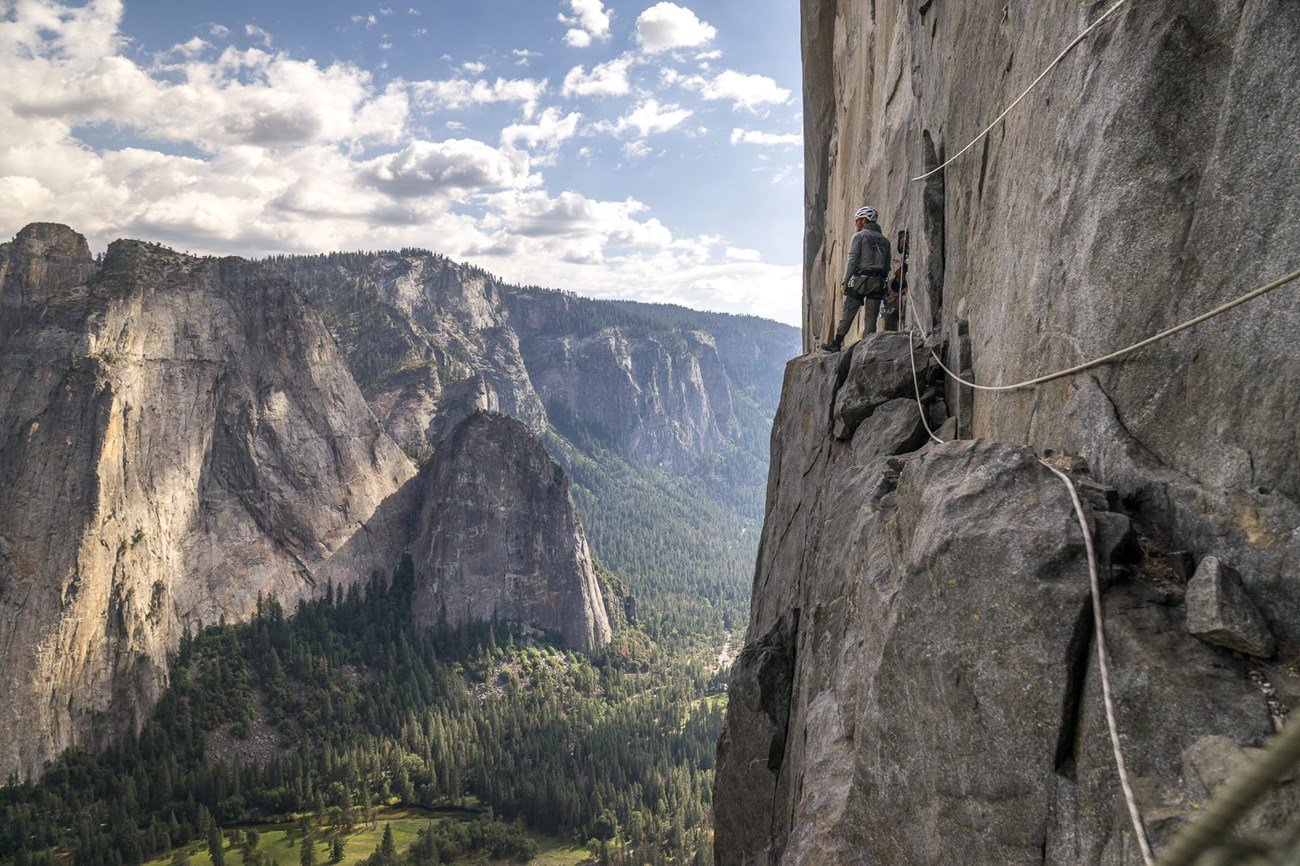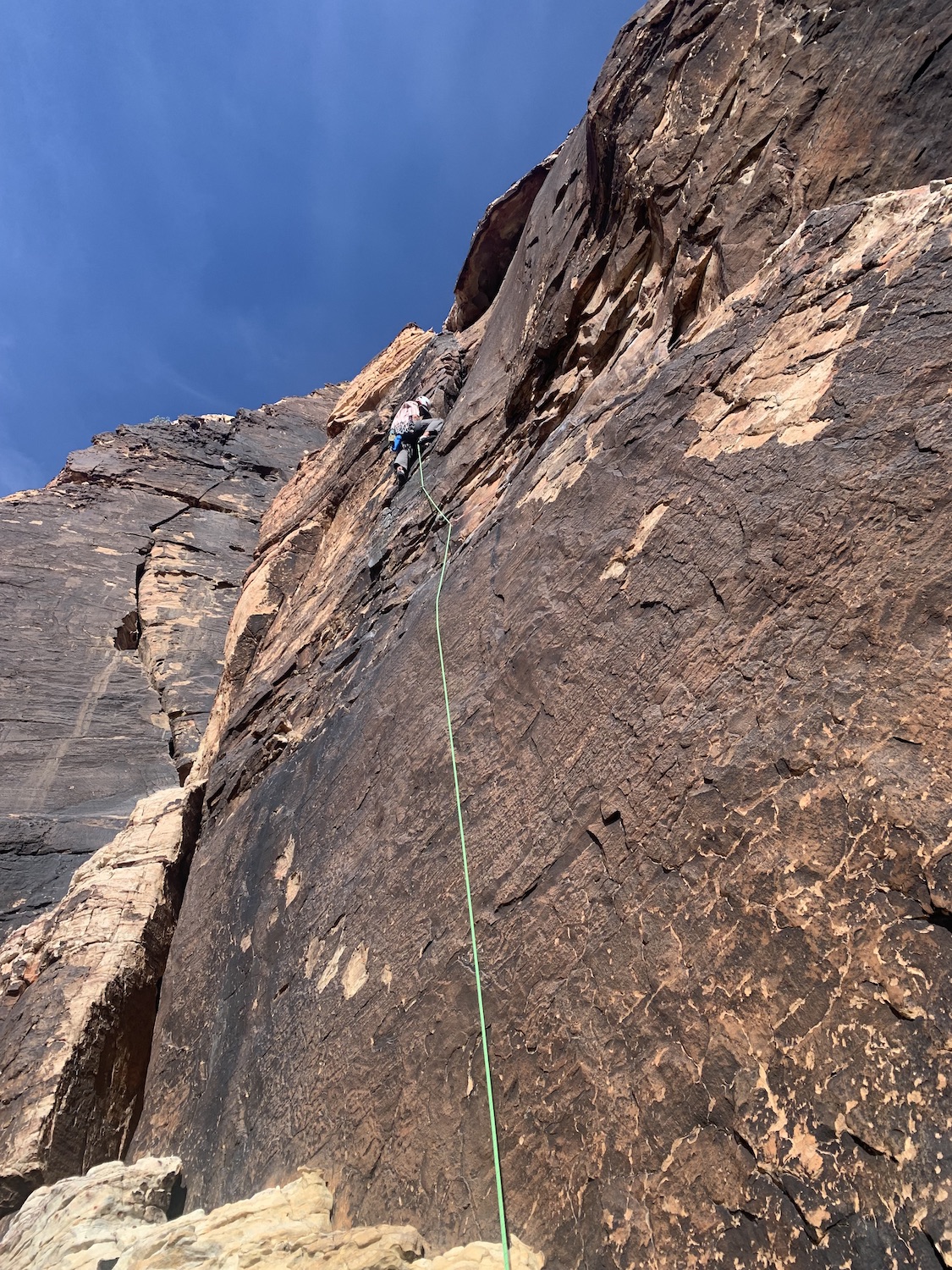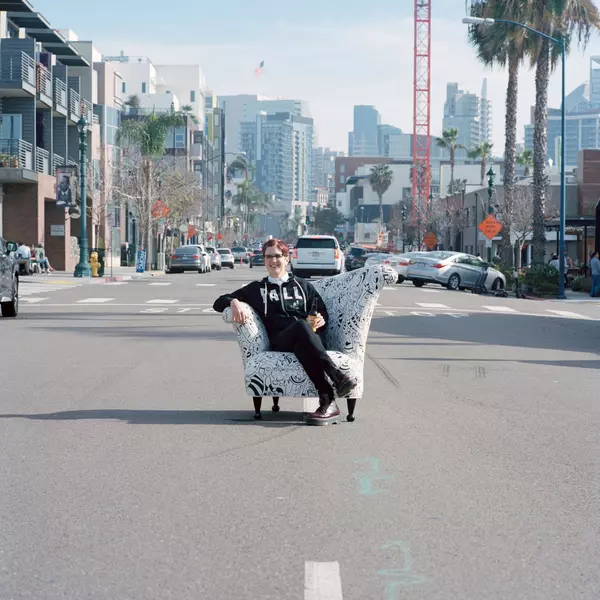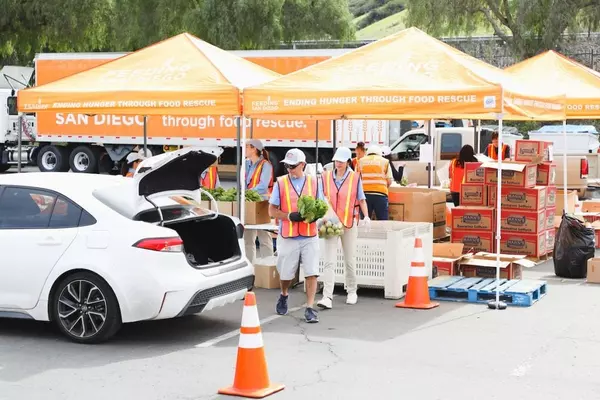How to Train for Climbing Yosemite’s El Capitan
“If you drive a car, the risks are greater than when you’re hanging on some rope,” says 41-year-old lifelong climber and San Diego local Kevin Smoker. “You really don’t have the bandwidth to be worrying about small day-to-day stressors [when you’re on the rock wall].”
While most people get sweaty palms just thinking about heights, Smoker finds altitude liberating. As a 21-year-old college student, he discovered climbing while working as a lifeguard. He started with jaunts to Mission Gorge with Tarrant Seautelle, a fellow lifeguard and an experienced climber.
“[Seautelle and I] bumbled along as trad climbers for a very, very long time together,” Smoker says. They summited peaks and traversed valleys throughout California, from Half Dome to Joshua Tree.
Years later, during an annual trip to Yosemite Valley with his wife, Ashley, and their two children, Smoker felt unusually sore during a routine hike. “Within 24 hours, I went from being in Yosemite Valley with my family to getting a phone call that said I have cancer,” he recalls.
Smoker is no stranger to mortality. At age 27, he suffered a traumatic brain injury after being hit by a car while biking. But this was different. Despite his early diagnosis, he endured years of treatment and monthly calls from the lab to see if the disease had returned. “After cancer scans, I would climb to let go of the fear. It was this routine that helped me manage the anxiety. Climbing became part of my healing journey,” he says.
Five years later, Smoker is cancer-free. “I don’t have the same lens that anything’s guaranteed, so I say yes to a lot more things,” Smoker says. He and Seautelle formed a pact to climb The Nose of El Capitan, a grueling 31-pitch, multi-day gauntlet, in October 2025.
To help other climbers training for El Cap, Smoker shares the best tips and tricks for preparing for one of the world’s most famous big-wall ascents. Here’s what he has to say:

How to Train for Climbing El Capitan
Choose the Right Climbing Shoes
Smoker suggests checking out your local gym’s shoe demo days to try various sizes and models of climbing shoes on the wall. He advises people to remember that, when tackling El Cap, “your feet swell. You’re in your shoes for hours and hours.”
Smoker recommends flat trad shoes, like La Sportiva’s TC Pro (a favorite of legendary climbers Alex Honnold and Tommy Caldwell) and Black Diamond’s Ascent Pro models, for big-wall climbing. These shoes provide additional support, which is helpful for reducing fatigue. They’re also stiffer, helping support your weight in cracks and for extended periods on Yosemite’s iconic granite walls.
Have a Climbing Training Program
Planning is key. Before serious climbs, Smoker maps out routes, climbing disciplines, and training weak points he needs to perfect on a spreadsheet. “I’m not going into the gym to just climb,” Smoker says. “I’m going to the gym with intention. It’s really important that I stick with the goals of my training plan.”
Smoker structures his climbing training into blocks: six weeks of endurance training, three weeks of strength training and bouldering, and two weeks of power and endurance training. He typically climbs three times a week indoors, with aerobic, respiration, and capillarity (ARC) training on all three days. “When I got into ARC training, that is when I really started to see serious growth,” Smoker says. ARC constitutes climbing continuously for periods of 25 to 45 minutes, just below your lactic threshold, without breaks. You’ll build strength without exhausting your arm muscles so much you can’t continue.
Smoker also dedicates weekly sessions to crack climbing and training outdoors, and he schedules an hour of functional strength and mobility training two times a week. Outside the climbing gym, Smoker splits his efforts between endurance (80 percent) and strength (20 percent) training, with a focus on shoulder and abdominal work. He takes one rest day.
Finally, Smoker reads climbing guidebooks (especially those by Chris McNamara), studies maps, and watches YouTube videos to fill gaps in his knowledge.

Get Comfortable Climbing Outside
While Smoker makes frequent appearances at local gyms like Vertical Hold and Mesa Rim, he believes you should “get outside as early in your climbing career as possible. It’s different [from] climbing in a gym. You can go into a gym and crush 5.12s, and, once you’re outside, you don’t move the same.”
Outdoor climbing introduces new variables like various rock types, weather, and fatigue management. You’ll need to hone your skills at setting up anchors, lead climbing, and falling safely. Smoker recommends climbing Mt. Woodson—specifically the routes Robin’s Crack (5.10a) and Jaws (5.11a)—to gain experience on granite and prepare for Yosemite’s walls.
Training for Higher Altitudes
To prepare for the stress and fatigue of climbing at high altitudes, Smoker builds up his endurance at sea level by hiking hilly terrain with a weighted backpack, without taking breaks to sit. Additionally, US gym chain Air Locker Training recently opened a location in San Diego, allowing gym-goers to exercise in a simulated altitude environment.
At higher altitudes, decreased oxygen—and the exhaustion that comes with it—means “micro-movements” become much more meaningful. While thousands of feet up, Smoker aims to minimize any unnecessary use of energy.
Training for Long Multi-Pitch Climbs
Multi-pitch climbs require staying on a rockface for extended periods, which can be draining. “People always think it must be so hard on your forearms or something,” Smoker says. “It’s not just about physical strength—it’s problem-solving and engineering.” To prep and increase his speed, he regularly practices timed “laps” of outdoor routes.
He adds that learning how to aid climb—using aiders (or ladders) and other equipment to hoist yourself up over difficult terrain—helped him progress. Smoker recommends reading books like Chris McNamara’s How to Big Wall Climb, which explains aid climbing in detail, and watching YouTube videos before trying these techniques out at local climbing spots.
What Should Be in Your Haul Bag?
In big wall climbing, your haul bag is your lifeline. Climbers need to find the right balance between utility and weight, since every pound counts when trying to conserve energy on the rock wall.
When trying to tackle The Nose, fill yours with the following: two dynamic ropes and a static haul line; microtrax; a walkie-talkie; a helmet; slings and quickdraws (20+); plenty of carabiners (locking and non-locking); cordelettes for anchors; belay devices, including two ATCs and two grigris; approach shoes; a solar battery for your phone; and a repair kit. For more must-haves, check out lists such as this one from Chris McNamara.
As for fuel, Smoker prefers snacks like Clif bars, espresso-flavored energy gels, and even candy bars to give him boosts of energy on the mountain. “It’s nice to have something that you don’t look at like, ‘Oh my God, I gotta eat this now,’” he says.
Learn from Experienced Climbers
“For newer climbers, footwork and movement are more important than just grip strength,” Smoker says. While not everyone has the lanky builds of Honnold or Lynn Hill, good technique can take any climber a long way.
And, with any climb, use the buddy system. “Go with a mentor,” Smoker says. “People are willing to do that [mentoring] when you’re excited and bring joy to the activity.” He also recommends buying your guides a beer or pizza or covering gas money on your next trip—certainly an effective way to make new climbing friends.
This post contains affiliate links to products and services. We may receive compensation when you click on links.
The post How to Train for Climbing Yosemite’s El Capitan appeared first on San Diego Magazine.
Categories
Recent Posts










GET MORE INFORMATION


